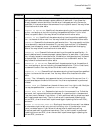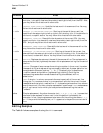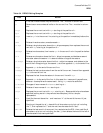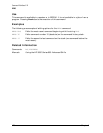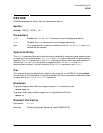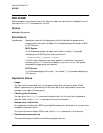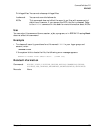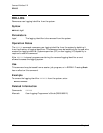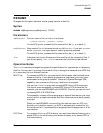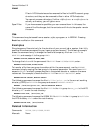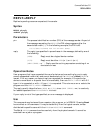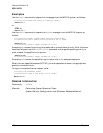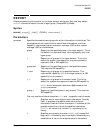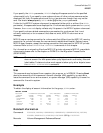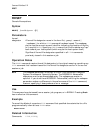
Chapter 6 475
Command Definitions P-R
RENAME
RENAME
Changes the file name, lockword, and/or group name of a disk file.
Syntax
RENAME oldfilereference,newfilereference[ ;TEMP]
Parameters
oldfilereference Current name of file, written in the format:
[*]filename[/lockword][.groupname[.acctname]]
To use HFS syntax, preceed the file name with a dot (.), or a slash (/).
newfilereference New name of file, in the same format as oldfilereference. If you omit acctname
and/or groupname, the logon account and/or group are assumed.
To use HFS syntax, preceed the file name with a dot (.), or a slash (/).
TEMP Indicates that the old file was, and the new file will be, temporary files. If
you do not specify TEMP, RENAME assumes that the files are permanent.
Operation Notes
The RENAME command changes the system file identification for a permanent or temporary
disk file. You can use it to change the name of a file, to change the lockword of an MPE file,
or to move any file to a different location.
MPE Files To rename an MPE file, you must be the file's creator and have exclusive
access to the file. If you specify groupname or acctname, you must have
save access to the group or account. Users with System Manager (SM)
capability can rename any file to any location on the system.
You can use RENAME to move native mode MPE files to HFS directories.
You cannot move compatability mode MPE files to HFS directories. For
example, you can use RENAME with KSAM/XL files, but you cannot use it
to rename MPE V/E KSAM files.
To successfuly rename a file across group or account boundaries, you must
move it within a single volume set and that volume set must be physically
mounted.
When you use RENAME to move a file that does not have an ACD to a
directory or to another account, an ACD is automatically created for the
file to ensure that it is protected by the appropriate file access matrix of its
new location.
HFS Files To rename a file in an HFS directory, you must have delete directory entry
access (DD) to the old directory and create directory entry access (CD) to
the new directory.



